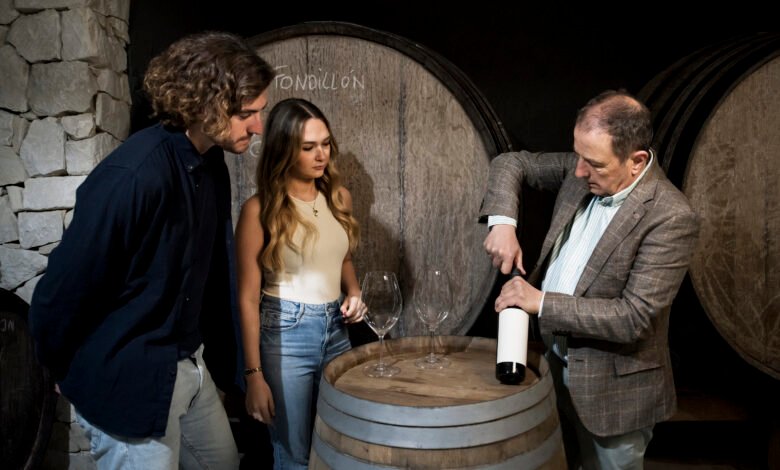XXL Wine: When Size Matters in the World of Viticulture

Forget the standard 750ml bottle; step into the realm of XXL wine, where bottles tower like skyscrapers in a cellar and command attention with their sheer audacity. These oversized vessels—bearing names like Jeroboam, Methuselah, and Nebuchadnezzar—aren’t just novelties; they’re emblems of celebration, history, and the artistry of winemaking. From royal feasts in ancient Persia to modern-day auction blocks, large-format bottles transform wine from a beverage into a spectacle. This article uncorks the mystique of XXL wines, exploring their cultural weight, practical magic, and the reasons they remain the ultimate showstoppers for collectors and connoisseurs alike.
Why Go Big? The Allure of Oversized Bottles
The appeal of XXL bottles transcends mere aesthetics. Scientifically, large formats like Magnums (1.5L) or Imperials (6L) age wine more gracefully. The reduced oxygen-to-wine ratio slows oxidation, preserving freshness and complexity for decades. Historically, kings and popes commissioned giant bottles to symbolize power—Louis XIV’s court adored Nebuchadnezzars (15L) for their theatrical impact. Today, they anchor milestone events: weddings, anniversaries, or record-breaking auctions (a 1945 Romanée-Conti Methuselah sold for $558,000 in 2018). Their rarity (often hand-blown by master glassmakers) and the logistical ballet required to fill, cork, and store them add layers of exclusivity.
Decoding the Giants: A Glossary of XXL Bottle Names
Navigating the lexicon of large formats feels like unlocking a vinous Rosetta Stone. Each name derives from biblical or historical figures, scaling up from the familiar:
-
Jeroboam (3L): Equivalent to 4 standard bottles; named after the first king of Northern Israel.
-
Methuselah (6L): Holds 8 bottles; references the oldest patriarch in the Bible.
-
Salmanazar (9L): 12 bottles’ worth; honors the Assyrian king who conquered Samaria.
-
Balthazar (12L): 16 bottles; evokes one of the Three Wise Men.
-
Nebuchadnezzar (15L): 20 bottles; titled after the Babylonian emperor. Beyond this, behemoths like Melchior (24 bottles) and Solomon (36 bottles) exist, though they’re rarities seen mostly in museums or billionaire cellars.
Crafting the Colossal: The Making of XXL Wines
Producing XXL bottles is a high-wire act combining tradition and precision. Glassblowing alone is perilous—molten glass must be shaped uniformly to withstand pressure, a feat few European artisans (notably in France and Germany) master. Filling demands custom equipment; some estates use gravity-fed systems to avoid pumping, which can disrupt tannins. Corking becomes Herculean: Nebuchadnezzars require hand-hammered agglomerate corks over 2 inches wide. Transport? A nerve-wracking endeavor. A single Imperiale weighs 25+ pounds when full, demanding reinforced crates and climate-controlled shipping. For winemakers, the gamble is real—a flaw means losing 20+ bottles in one blow.
XXL Wines in Culture: Status Symbols & Liquid Legacies
Beyond practicality, XXL bottles are cultural icons. In 19th-century Champagne, houses like Moët & Chandon popularized Jeroboams to flaunt luxury during Europe’s Gilded Age. Today, they’re geopolitical gestures: China’s elite gift Balthazars of Bordeaux to signify respect, while Silicon Valley tycoons bid on Salmanazars of Screaming Eagle as trophy assets. Restaurants leverage them for drama—sommeliers parade Methuselahs through dining rooms, igniting Instagram frenzies. Yet their deepest value lies in legacy: families cellar Imperials for newborns, opening them decades later at graduations or weddings, turning wine into a timeline of memories.
FAQ: Uncorking Curiosities About XXL Wines
Q: Do XXL bottles taste better than standard ones?
A: Often, yes. Slower maturation in larger formats yields nuanced tertiary aromas (think truffle, leather) and silkier tannins.
Q: What’s the largest wine bottle ever made?
A. A 490-liter “Maximus” crafted in Austria in 2024—equivalent to 653 standard bottles!
Q: Are they harder to preserve?
A. Once opened, consume within 24-48 hours (like any wine). Storage is the real challenge: horizontal to keep corks moist, in low-vibration environments.
Q: Why are they so expensive?
A. Scarcity (limited production), artisanal glasswork, and premium pricing per milliliter—plus the “wow factor” tax.
Conclusion: The Monumental Soul of Wine
XXL bottles are more than vessels; they’re time capsules of human ambition. They defy the ephemeral, inviting us to invest in patience—whether aging a Jeroboam for 20 years or sharing a Methuselah with 50 friends. In a world of fleeting trends, their grandeur whispers that some things deserve to be monumental. As wine critic Robert Parker noted, “The best wines belong in big bottles.” For in their scale, we find a deeper truth: wine is meant to be marveled at, shared widely, and remembered long after the last drop. So, when occasion calls for the extraordinary, think beyond the glass. Think XXL.



